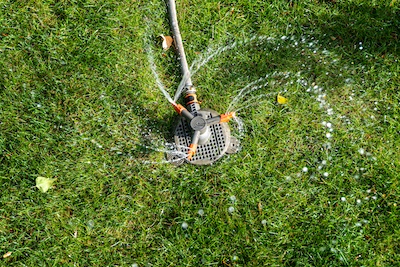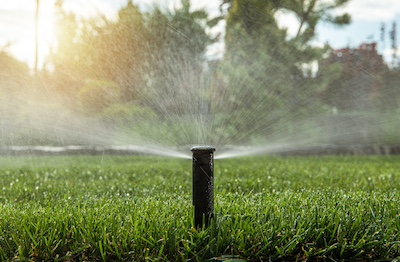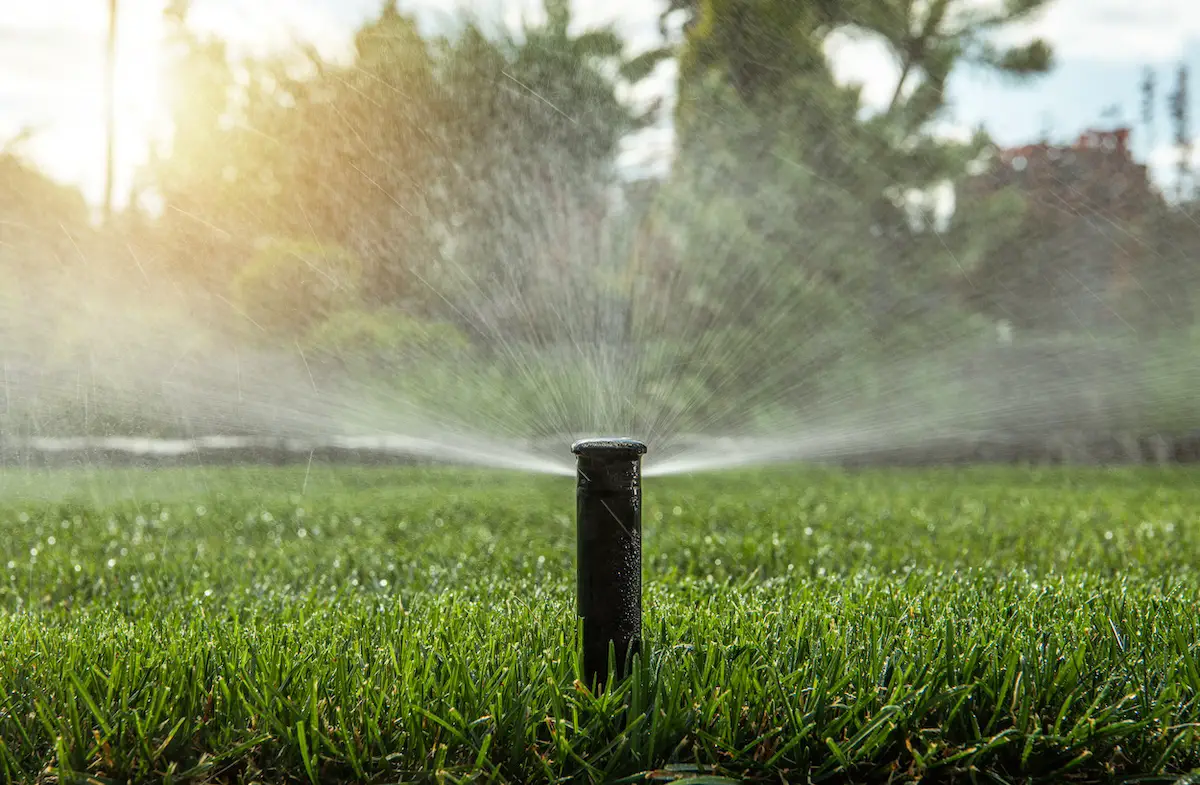Lawn Irrigation Sprinkler Types and Layout
Pop-up lawn irrigation sprinklers are a popular choice for residential lawns due to their convenience. These sprinklers retract into the ground when not in use, maintaining a neat lawn appearance and avoiding damage during mowing.
They come in various spray patterns, making them versatile for different garden shapes and sizes.
Rotary sprinklers, also known as rotating heads, are ideal for covering large areas of lawn efficiently. They shoot water in a circular pattern, and their long-range capability means fewer sprinkler heads are needed. This makes them cost-effective and efficient for spacious yards.
For those with varied plant life, including beds with flowers, shrubs, or vegetables, drip irrigation could be your perfect match. This system delivers water directly to the soil surrounding your plants, mitigating evaporation and ensuring water goes exactly where it’s needed, saving you money and conserving water.
Micro-spray sprinklers stand out for their gentle watering approach, making them suitable for delicate plants and flowers. They can cover small areas with a fine mist, mimicking natural rainfall. This reduces water waste and prevents soil erosion around tender plant roots.
When planning your irrigation layout, consider your yard’s unique characteristics—its size, the types of vegetation it hosts, and its soil type. Also, account for sun exposure and any slopes that may affect water distribution. Each sprinkler type has its specific benefits that can either enhance your yard’s health or lead to inefficient watering.
Choosing the right combination can be challenging. However, with a clear understanding of the different sprinkler types, you’re now equipped to create an irrigation system that’s both efficient and effective, ensuring a green, lush outdoor space without unnecessary water waste.

Setting Up an Efficient Lawn Irrigation Watering Schedule
Creating an efficient watering schedule is a challenge that many homeowners strive to solve. To conserve water and maintain a healthy lawn, it’s essential to understand the needs of your yard and the capabilities of your irrigation system. Here’s a guide to setting up a watering timetable that ensures your lawn gets the hydration it needs without waste.
First, know your soil. Different soil types absorb water at different rates. Sandy soil drains quickly and requires more frequent watering, while clay soil retains moisture longer and needs less frequent watering.
An easy way to test your soil type is to take a small amount and moisten it. If you can easily form a ball that holds together, you likely have clay soil. If it falls apart easily, it’s sandy.
Next, consider the root depth of your grass. Deep-rooted grass varieties can access water stored lower in the soil, which means they can go longer between waterings compared to grass with shallower roots. A simple way to encourage deeper root growth is to water less frequently but more deeply.
Understanding your local climate is crucial. Areas with higher temperatures and wind speeds will see faster evaporation rates, requiring more regular watering. Conversely, cooler, more humid climates might demand less.
Always adjust your watering schedule based on the current weather conditions. For instance, skip a scheduled watering after a good rain shower.
The best time to water your lawn is in the early morning hours, just before sunrise. This timing reduces water loss to evaporation and gives the grass blades time to dry off during the day, which can help prevent diseases.
Avoid watering in the evening as this can leave the grass damp overnight, making it a breeding ground for fungi.1
Consider integrating a smart irrigation controller. These devices can take the guesswork out of when and how much to water.
They monitor local weather, soil conditions, and even plant types to tailor watering schedules precisely. They can adjust for rain, humidity levels, and even specific watering zones within your yard.
Here’s a tip: To check if you’re watering enough, but not too much, use the “catch can” test. Place several empty tuna cans or similar containers around your lawn and run your sprinklers for 15 minutes. Measure the water in the cans with a ruler.
Ideally, you want about 1 to 1.5 inches of water per week, either from rainfall or irrigation, delivered all at once or divided into two sessions.2 Adjust your sprinkling duration accordingly.
Remember, creating an efficient watering schedule isn’t just good for the planet and your pocketbook; it’s also better for your lawn’s health. With smart planning and regular adjustments based on current conditions, you can keep your lawn thriving year-round while minimizing water use.

Maintenance for Lawn Irrigation Irrigation Systems
Maintaining an irrigation system is vital to keep your garden and lawn in prime condition. Let’s delve into the common maintenance tasks and troubleshooting steps to ensure your irrigation system works efficiently.
- Inspect your irrigation system regularly. Check for leaks in pipes, hoses, and fittings. Leaks can lead to water waste and affect the system’s pressure, resulting in poor performance. Turn on the system and walk around to observe any water pooling or unusual wetness on the surface. These are signs of a leak.
- Cleaning sprinkler heads is a must-do task. Over time, they can get clogged with dirt and debris, hurting their performance. If you notice uneven spray patterns or water not reaching certain areas, it’s a signal to check the heads. Unscrew them, remove any dirt or debris, and rinse thoroughly before reattaching.
- Adjusting the sprinkler heads is also crucial for optimal coverage. Make sure they’re aligned correctly to avoid watering sidewalks or driveways. This not only saves water but ensures your grass receives the moisture it needs. Use a screwdriver or a special key for adjustments, depending on your system.
- Testing the system’s water pressure is an often overlooked task. Too much pressure can cause damage, while too little affects water reach. Attach a pressure gauge to an outdoor faucet connected to the system to check. Your manual should tell you the optimal range.
- Replacing worn-out components is part of regular maintenance. Over time, parts suffer wear and tear and may need replacement. This includes sprinkler heads, valves, and even the backflow preventer. It’s wise to keep a few spare parts on hand for quick fixes when needed.
Troubleshooting electrical issues can sound daunting but start with checking the controller. Make sure it’s plugged in and functioning. Power surges or outages can reset it, so review your watering schedule settings. If the system isn’t starting at all, check fuses or circuit breakers and ensure the water supply is turned on.
If your lawn has dry spots despite regular watering, you might need to recalibrate. Perform a catch cup test again as conditions change throughout the season. This helps adjust the amount of water and duration per zone to ensure uniform hydration.
Prepare your system for winter if you live in a colder climate. Draining pipes, valves, and sprinkler heads can prevent freezing damage. Professional services are available for this process, but many do-it-yourself guides offer step-by-step instructions for those comfortable tackling it themselves.
Following these maintenance tasks and troubleshooting tips will help keep your irrigation system in top shape, ensuring your yard remains healthy and vibrant. Regular checks and adjustments play a crucial role in water efficiency and plant health.

Selecting a Lawn Irrigation System for Your Yard
Selecting the appropriate sprinkler system and establishing an effective watering routine are fundamental steps toward maintaining a healthy and vibrant garden.
By considering the specific requirements of your lawn and utilizing the right irrigation tools, you can achieve optimal growth with minimal water waste. A well-thought-out approach to irrigation is beneficial for your garden and also contributes to water conservation efforts.
- Gelernter WD, Stowell LJ, Johnson ME, Brown CD, Beditz JF. Documenting a method for successful restoration in turfgrass management. Agron J. 2015;107(5):1793-1803.
- Haley MB, Dukes MD. Validation of landscape irrigation reduction with soil moisture sensor irrigation controllers. J Irrig Drain Eng. 2012;138(2):135-144.

